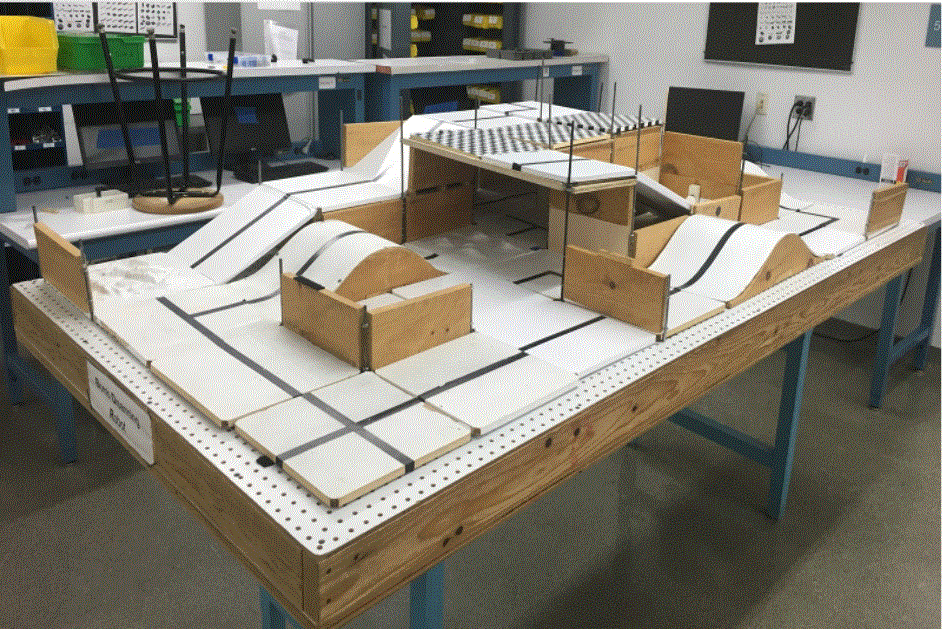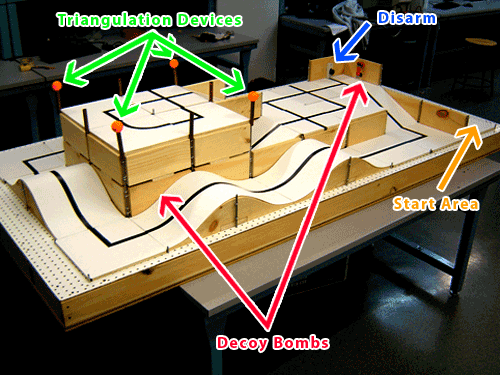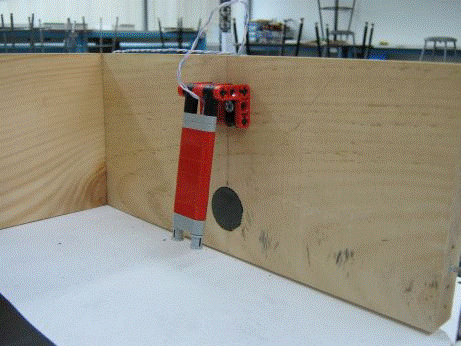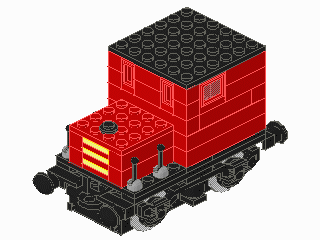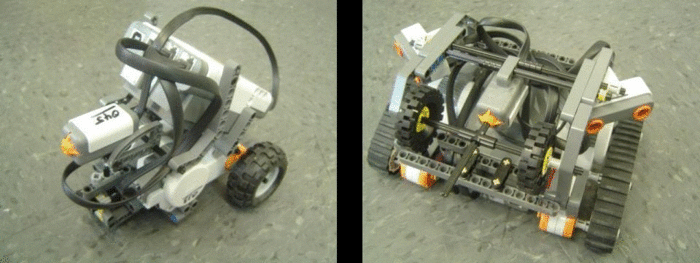Bomb Disarming Robot (BDR)
RFP*: Bomb Disarming Robot (BDR)
* RFP is an acronym for Request For Proposal. Internationally, RFPs are called ITTs, an acronym for Invitation To Tender. Companies and governmental agencies use RFPs to solicit new business.
INTRODUCTION AND OVERVIEW
The United States Department of Homeland Security, was established in 2002 by an executive order issued by President George W. Bush. The department is an amalgamation of 22 federal agencies all dedicated in various ways to the protection of our country. The Department has three primary missions:
- To prevent terrorist attacks within the United States,
- To reduce America's vulnerability to terrorism, and
- To minimize the damage from potential attacks and natural disasters.
Among its many directives, the Department considers it a top priority to reduce the threat imposed by explosive devices to both our citizens and our first responders. As recent events have made clear, the potential danger to innocents is real and is one we must contend with. A strategic component of the Department's 10-point plan to deal with explosives that threaten the citizenry is a fully autonomous robot designed to navigate to an explosive device and disarm it. Such a machine would not only reduce the threat to bystanders, but would protect the brave men and women who have dedicated their lives to our safety.
This bomb disarming robot, code-named BDR, should be nimble and effective. Your design must be reliable and cost-effective, as the Department envisions the deployment of a large number of BDRs throughout the country. The winning proposal must demonstrate the dependability of your design. Innovation in your approach to the problem will be rewarded.
SPECIFICATIONS
Design a robot using MLCad as your primary design tool. Your team must build a model of your design using the materials provided. A Mindstorms program that will direct the robot's movements must be created. A cost estimate of the robot's components must be provided. All revisions to the original design must be recorded and explained. This includes technical design drawings, as well as cost estimates. All revisions to the Mindstorms program must be recorded and explained.
The BDR must be able to move autonomously over a pre-selected route, disarm a bomb, avoiding any decoy bombs, and, for extra credit, disable and retrieve triangulation devices, returning them to the start point. The BDR must not touch the decoy bombs even after they disarm the bomb. The robot must fit in a start area that is 25cm by 25cm by 20cm high (see Figure 1). These specifications must be met for final commissioning.
The robot program may not be altered or switched during any part of the mission. Likewise, the robot must be fully autonomous, and therefore cannot be touched by any person during testing. Please refer to the course syllabus for all due dates.
ROUTE CHOICES
Route 1: The robot must follow the black line, traverse the black tunnel, disarm the bomb, and return to the start area (see Figures 1 and 2).
Route 2: The robot must navigate the perimeter of the course, proceed to the bomb's location, disarm it, and return to the start area (see Figures 1 and 2).
Please Note:
Projectile (catapult, slingshot) designs are not allowed. Your robot must travel to the bomb in order to disarm it.
There are two versions of the BDR course. Your Professor or TA will assign to you either BDR Day (white) or BDR Night (black). BDR Day and BDR Night are similar, but not exactly the same.
For extra credit, the robot can disable the triangulation system by disabling at least two devices (knocking ping pong balls off of their tubes). The devices are located on the roof of the complex. One of these triangulation devices may be retrieved and returned to the start area for additional extra credit. A picture showing the placement of the devices is shown below in Figure 5:
If you would like to design your own route, you may ask your instructor for permission.
Creativity and innovation are always rewarded. Original designs will receive extra credit.
MICROSOFT PROJECT
Your team must create a time management plan using Microsoft Project (MS Project). You can learn Microsoft Project by doing the MS Project Skill Builder contained elsewhere in this manual. This plan must include all tasks related to the project. Each task must be named, assigned a duration amd assigned to a specific person (or people). You must begin your work by creating an MS Project plan. Follow your project plan throughout the semester. If the team falls behind schedule, explain the reasons for the delays when you present your progress reports, list the steps being taken to get the project back on track, and create a revised MS Project plan.
For help in planning your project, review the page called How to plan the schedule and calculate costs for a project in the section called Material to help you with the project elsewhere in this manual.
There should be at least twenty tasks/subtasks and three Milestones. Milestones should be noted with the duration of "0day". Moreover, the copy picture function included in MS Project Software should be used instead of the print screen function of the computer.
DRAWINGS
A command of MLCad is necessary for you to complete the drawings required for this project. Use MLCad to create four drawings of your robot: front, top, most detailed side, and a drawing of your gear trains. Sensors, motors, and gears must be included in each drawing. All parts used in the robot must be referred to using the part number found in the price list.
Each revision of your design must be documented. This is done by saving the old side view drawing, and assigning a revision number to the new drawing.
NXT Parts
Since NXT is a very recent technology upgrade to Mindstorms, the NXT parts have not been fully reviewed for inclusion in the "official" parts library for MLCad. There are unofficial versions of the parts available for use in MLCad. You can download the parts using the following links:
- Watch this space for links
MODEL
You must build a scale model (1:1) of your design. The following materials will be provided:
- Mindstorms kit
- One NXT
- Sensors
- Motors
Additional materials can be supplied by your TA.
COST ESTIMATE
Once a robot design is complete, a cost estimate must be generated that specifies the cost of all the materials and labor required for the construction of your design. Tabulate this cost information clearly in an Excel spreadsheet, using the materials cost list provided. You can get help in calculating the cost by reviewing the page called How to plan the schedule and calculate costs for a project in the section called Material to help you with the project elsewhere in this manual. The costs for the parts can be found on the page Price list for Lego parts for robot projects in the Material to help you with the project section elsewhere in this manual.
Note: You should only use the materials contained in the Price list for Lego parts for robot projects. If you want to use other parts, get permission from your faculty member to do so, and also to determine the cost of the parts you want to use that are not in this price list.
Have all the materials and parts used categorized in different groups instead of including individual parts. Make sure to include the units of each part used in a group and total them up for that individual group. Moreover, the cost of labor should be included. You can get help on the labor cost by reading the page How to plan the schedule and calculate costs for a project in the section called Material to help you with the project elsewhere in this manual.
MILESTONES
As you work on your project, you will be required to present periodic reports on your progress. We call these Milestones. All the items assigned in each Milestone are called deliverables. These deliverables often consist of a combination of written submissions, presentations, and demonstrations.
Milestone 1
Prepare a preliminary sketch of your design, a cost estimate, and an MS Project plan. Also, indicate which route you plan to follow from the start line to the bomb.
Look Ahead: What tasks do you plan between now and Milestone 2?
Milestone 1 Deliverables: A presentation. Include the preliminary sketch, cost estimate, and MS Project plan. Include a brief description of the robot, the route to be followed, and any special features and benefits of your design.
Note: Whenever you revise your drawing(s), your cost estimate, or your MS Project plan, you must include the initial drawing, the initial cost estimate, or the initial MS Project plan, in addition to the revision.
Milestone 2
Using MLCad, prepare four views of your latest design: front, top, most detailed side, and an isometric drawing. Create an MLCad drawing of your gear trains. Complete your latest Mindstorms program and your latest MS Project plan reflecting any schedule changes. Finally, calculate a revised cost estimate. A signed Benchmark Assessment A Form must be submitted to your Recitation TA.
Look Ahead: What tasks do you plan between now and Milestone 3?
Milestone 2 Deliverables: A copy of your presentation slides that includes four views of your design using MLCad: front, top, most detailed side, and an isometric drawing; an MLCad drawing of your gear trains; your Mindstorms program; a revised cost estimate; your revised MS Project plan; and your signed Benchmark Assessment A Form.
Note: Whenever you revise your drawing(s), your cost estimate, or your MS Project plan, you must include the initial drawing, the initial cost estimate, or the initial MS Project plan, in addition to the revision.
Milestone 3
Using MLCad, prepare four views of your latest design: front, top, most detailed side, and an isometric drawing. Create an MLCad drawing of your gear trains. Complete your latest Mindstorms program and your latest MS Project plan reflecting any schedule changes. Finally, calculate a revised cost estimate. A signed Benchmark Assessment B Form must be submitted to your Recitation TA.
Look ahead: What tasks do you plan between now and the completion of the project?
Milestone 3 Deliverables: A copy of your presentation slides that includes four views of your design using MLCad: front, top, most detailed side, and an isometric drawing; an MLCad drawing of your gear trains; your Mindstorms program; a revised cost estimate; your revised MS Project plan; and your signed Benchmark Assessment B Form.
Note: Whenever you revise your drawing(s), your cost estimate, or your MS Project plan, you must include the initial drawing, the initial cost estimate, or the initial MS Project plan, in addition to the revision.
FINAL PRESENTATION
The exact specifications for your final presentation will be provided by your instructor. Some of these requirements will be: the features and benefits of your design, project specifications, all drawings, Mindstorms programs, cost estimates, and your completed MS Project. Ideally, commissioning should take place before the Final Presentation. If, for some reason, you were not commissioned, then you may do so after the presentation. A signed Commissioning Statement must be included with your final presentation materials.
Final Submission
Your project should be submitted as a folder containing the following deliverables:
- Benchmark Assessment A statement
- Benchmark Assessment B statement
- Commissioning statement
- Hardcopy and CD containing:
- Final presentation
- Cover page and table of appendices.
- Appendices:
- Final Mindstorms program
- Initial sketch
- All the drawings of your final design
- Video
- Final MS Project Schedule
- Final Cost estimate
- Resume(s)
EARLY ACCEPTANCE
If you complete your project one week early, you are eligible for a bonus that will be added to your final semester-long project grade. You must submit all deliverables by 5PM one week before your section is scheduled to present (see syllabus for exact date). To commission early, all required information on the form titled Project Submission Form, found on the EG web site, must be approved, accepted, and signed by a TA. The deliverables received early are the ones you will use in your presentation. No adjustments to the deliverables commissioned will be accepted.
LIQUIDATED DAMAGES
If you do not complete all your deliverables and do not commission during the Final Presentation, you will incur liquidated damages as defined in the grading policy..
